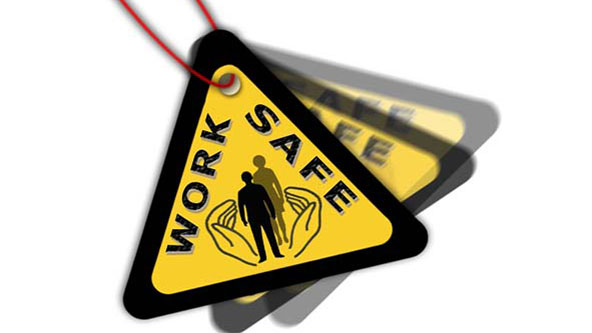Sodium Hypochlorite (Bleach) Safety Information
It whitens your whites, cleans your floors and acts as a great sanitizer. But bleach, (also known as its chemical name, sodium hypochlorite) can be quite hazardous when not handled properly.
What Is Bleach AKA Sodium Hypochlorite?
Sodium hypochlorite is a green/yellow liquid that smells like chlorine. It is a chemical compound comprised of sodium cation and hypochlorite anion, two compounds with charges that attract one another.
The first batch was created by Claude Louis Berthollet in 1789. Given the time period, the initial creation of sodium hypochlorite was weak compared to today. As technology and chemistry improved, other companies created stronger and better quality sodium hypochlorite, with the final, and universally used version, being produced by Occidental Petroleum. It is a chemical on the Special Health Hazard Substance list and proper use and disposal procedures need to be followed. VelocityEHS strongly recommends that all companies who have employees with risk of exposure to this substance need to insure that their MSDS library and labels adhere to the latest safety standards.
The Benefits of Bleach (Sodium Hypochlorite)
While bleach or sodium hypochlorite can be hazardous, when used properly, it can make the world at large a much healthier place. Here is a short list of some of the common residential and industrial uses for sodium hypochlorite:
- Bleaching (both in homes and in hospitals, businesses and other public places)
- Disinfection
- Deodorizing
- Stain Removal
- Water Treatment (for the public)
- Endodontics
- Nerve Agent Neutralization
- Reduction of Skin Damage (mainly from eczema)
Proper Use of Sodium Hypochlorite in the Home
There isn’t a household in America that doesn’t use bleach in one way or another, and bleach produced commercially for home use is formulated with very small amounts of sodium hypochlorite – typically anywhere from 3-8 percent. This does not mean, however, that serious damage to people cannot occur from consistent exposure to sodium hypochlorite, or by an accidental spilling onto the skin, splashing in the eyes, or ingestion.
When using bleach for laundry, it is important to follow the dilution instructions on the label as bleach can burn through material when applied singly without any water dilution. This is the same when using bleach in the home for disinfecting purposes: it is recommended that there are four parts water to every one part of bleach. The dilution of bleach should always be water. The following should not ever be mixed with bleach:
- Acidic toilet bowl cleaners – this can result in deadly, toxic fumes as it creates acidic products mixed with bleach create chlorine gas. This also includes vinegar.
- Ammonia – mixing bleach with ammonia will create chloramine vapors, which is a highly toxic and potentially deadly gas. Check the ingredients on other cleaners you may use to ensure none have ammonia in them should you try to mix them with bleach.
- Different brands of one kind of products – bleach can be unstable; mixing it with a variety of other chemicals can cause toxic vapors and mixtures
Sodium Hypochlorite Exposure and Poisoning Symptoms
VelocityEHS knows consistent exposure to bleach can cause the following types of symptoms:
- Coughing from the fumes
- Delirium
- Irritation, blistering and burning when put on the skin
- Stomach and abdominal pain if ingested
Care for Bleach Exposure
- Call Poison Control immediately
- DO NOT make someone throw up when he/she has ingested bleach – it will burn them as the liquid comes back up. Also do not give water or milk to swallow unless directed by a medical professional
- If bleach is on the skin or in the eyes, flush for at least 15 minutes with water
- For those who have inhaled any toxic fumes due to bleach exposure, move him/her immediately to fresh air
Industrial Sodium Hypochlorite Safety Tips
Industrial use of bleach is very commonplace, particularly with buildings that have a large, public exposure, such as pools, hospitals, restaurants, etc. There are industrial-strength bleaches available for this type of cleaning, with the sodium hypochlorite compound comprising approximately 10-12 percent of the overall industrial bleach mixture. Therefore, industrial exposure and use has higher risks than normal household use.
The NIOSH recommended exposure limit (REL) is 0.5 part per million (ppm), which should not be exceeded during any 15 minute work period. The American Industrial Hygiene Association recommends a Workplace Environmental Exposure Level (WEEL) of 2 mg/m (milligrams of a chemical in a cubic meter of air) for a 15 minute work period.
For those businesses and industries with employees using bleach, proper workplace controls and practices need to be implemented and personal protective equipment (PPE) need to be provided, including eyewear, clothing and gloves. All employees handling sodium hypochlorite also need to be properly trained on storage of the chemical. For information about Sodium Hypochlorite, visit VelocityEHS’ leading online library of Safety Data Sheets.
Industrial Sodium Hypochlorite and COVID-19
The global COVID-19 pandemic has increased workplace usage of cleaning chemicals like sodium hypochlorite to prevent the spread of the coronavirus.
